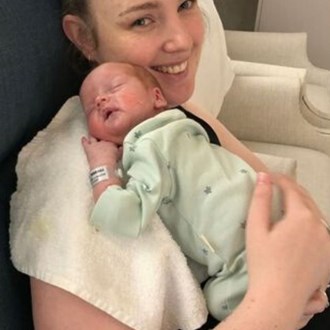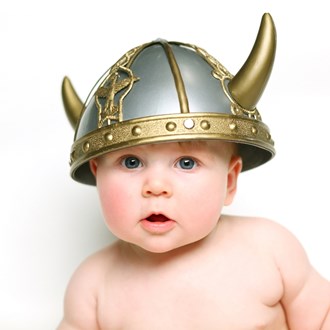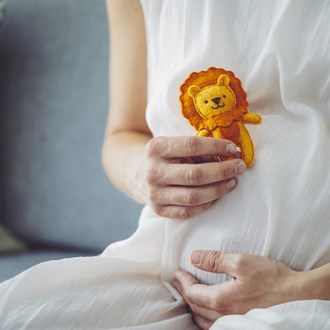One Egg Two Sperm - Australia's First Semi-Identical Twins Discovered
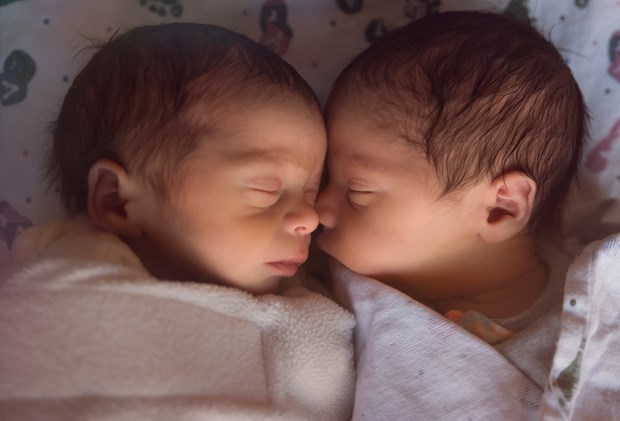
What happens if two sperm fertilise the mother’s egg at the same time? Well, you could end up with semi-identical twins. Never heard of semi-identical twins? That’s because there’s only two reported cases in the world. And in a phenomenal discovery, researchers have identified the first live ‘one egg two sperm semi-identical twins’ Australian success story.
To say ‘one egg two sperm semi-identical twins’ are rarer than hen’s teeth is an understatement. This is because Mother Nature normally prevents it from happening (the egg usually hardens once penetrated by a sperm so that no other sperm can get in). And if two sperm do manage to penetrate the egg, the embryos rarely survive. But in a world first, researchers from UNSW Sydney and QUT have used genetic testing to detect semi-identical twins in pregnancy for first time.
The young Queensland twins, a boy and a girl now age 4, have been identified as only the second set of semi-identical twins in the world – and the first to be identified by doctors during pregnancy.
What makes them semi-identical twins?
The twins are identical on their mother's side but share only part of their father's DNA. That is, they share 100% of their mother’s genes, but are like siblings on their father’s side, sharing a proportion of their father’s DNA.
“It is likely the mother’s egg was fertilised simultaneously by two of the father’s sperm before dividing,” said Professor Fisk, who led the fetal medicine team that cared for the mother and twins while based at Royal Brisbane and Women’s Hospital in 2014. Professor Fisk, a past President of the International Fetal Medicine and Surgery Society, worked alongside clinical geneticist Dr Gabbett.
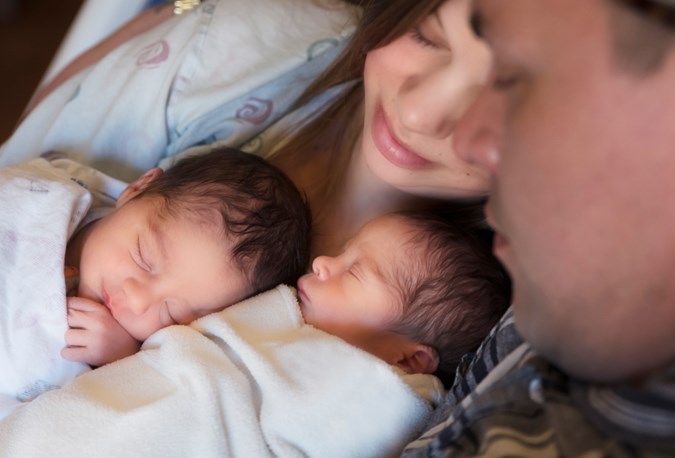
Image: Getty.
How were the semi-identical twins discovered?
The now four-year-old boy and girl twins where discovered during pregnancy by Fetal medicine specialist and Deputy Vice-Chancellor (Research) at UNSW, Professor Nicholas Fisk, QUT.
“The mother’s ultrasound at six weeks showed a single placenta and positioning of amniotic sacs that indicated she was expecting identical twins. However, an ultrasound at 14 weeks showed the twins were male and female, which is not possible for identical twins.”
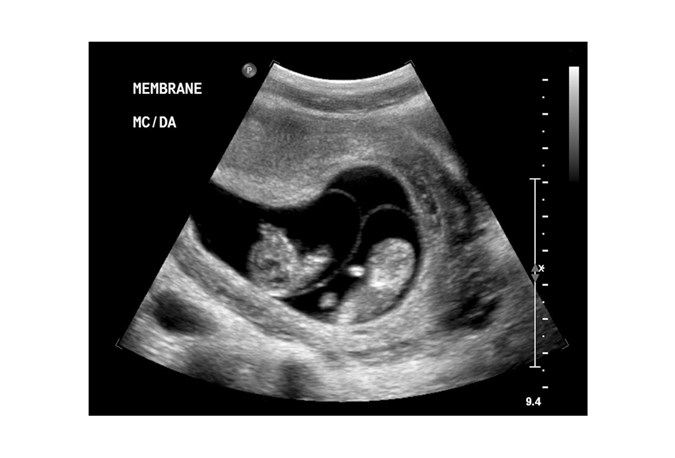
Image: A Monochorionic Twins ultrasound, showing identical twins that share a placenta.
Why is the discovery of semi-identical twins so important?
This is the first case of semi-identical, or sesquizygotic, twins identified in Australia. They are the first worldwide to be diagnosed on genetic testing while still in the womb.
Why are semi-identical twins so uncommon?
“If one egg is fertilised by two sperm it results in three sets of chromosomes, one from the mother and two from the father,” explains Dr Gabbett. Three sets of chromosomes are typically incompatible with life and embryos do not usually survive.
“In the case of the Queensland sesquizygotic twins, the fertilised egg appears to have equally divided up the three sets of chromosomes into groups of cells which then split into two, creating the twins,” said Dr Gabbett.
“Some of the cells contain the chromosomes from the first sperm while the remaining cells contain chromosomes from the second sperm, resulting in the twins sharing only a proportion rather than 100% of the same paternal DNA.”
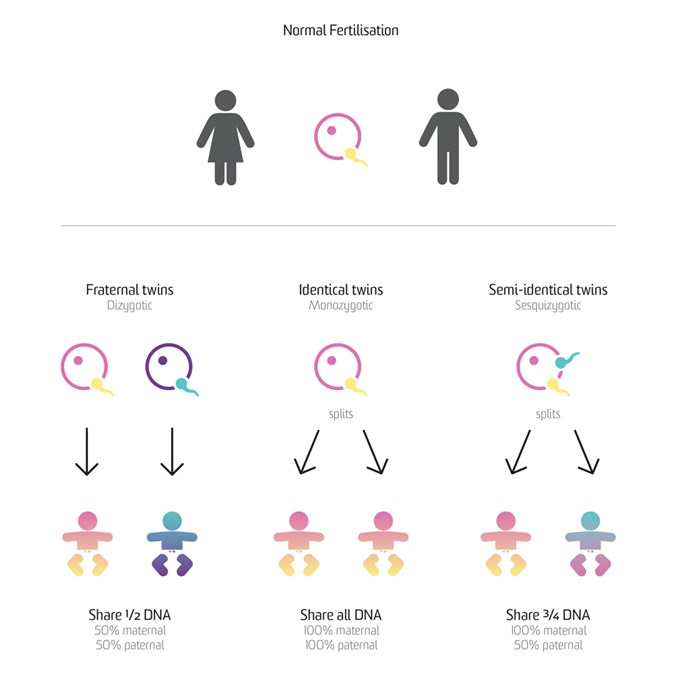
How are semi-identical twins different to identical twins and fraternal twins?
Identical twins result when cells from a single egg fertilised by a single sperm divide into two, so identical twins are the same gender and share identical DNA. Fraternal twins occur when each twin develops from a separate egg and the egg is fertilised by its own sperm.
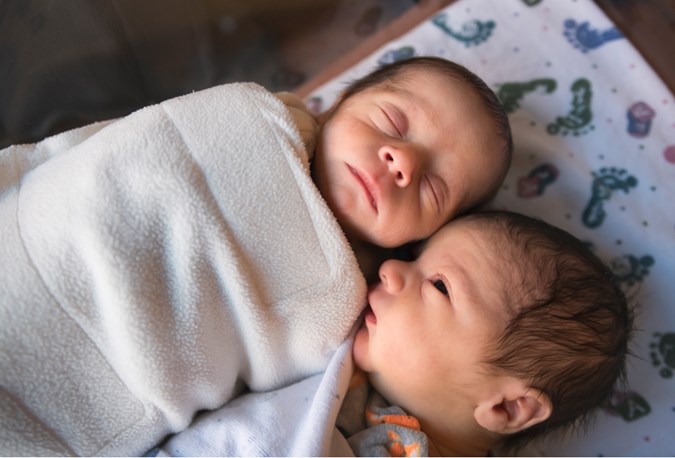
Image: Getty
How rare are semi-identical twins?
Sesquizygotic twins were first reported in the US in 2007. The twins only came to doctors’ attention in infancy after one was identified with ambiguous genitalia. On investigation of mixed chromosomes, doctors found the boy and girl were identical on their mother’s side but shared around half of their paternal DNA.
Professor Fisk said an analysis of worldwide twin databases pointed to just how rare sesquizygotic twins are.
“We at first questioned whether there were perhaps other cases which had been wrongly classified or not reported, so examined genetic data from 968 fraternal twins and their parents,” he said.
“However, we found no other sesquizygotic twins in these data, nor any case of semi-identical twins in large global twin studies.”
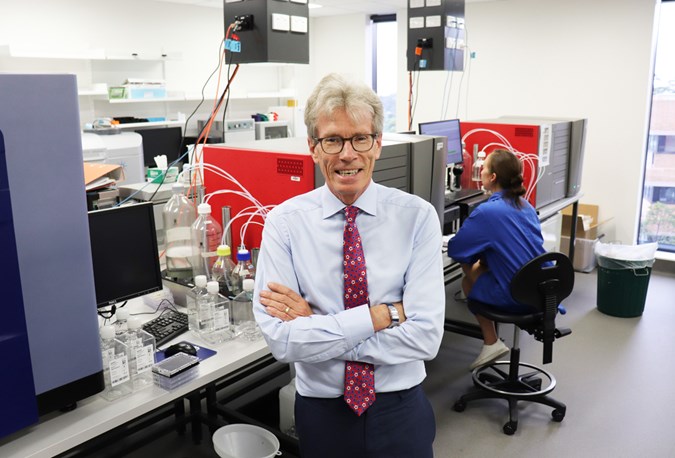
Pictured: Deputy Vice-Chancellor (Research) at UNSW, Professor Nicholas Fisk, QUT.
How are the Australian semi-identical twins today?
At age four, the twins are healthy and have achieved all their development milestones.
“We know this is an exceptional case of intermediate twins, also known as a third type of twinning,” said Professor Fisk. “While doctors may keep in mind that these types of twins are extremely uncommon, its rarity means there is no case for routine genetic testing.”

Franki Hobson is a women’s lifestyle journalist and editor with more than twenty years’ experience. Her areas of expertise include parenting and health and well-being. Franki has two gorgeous boys, Maxwell, 10, and Louis, 1 ½.



